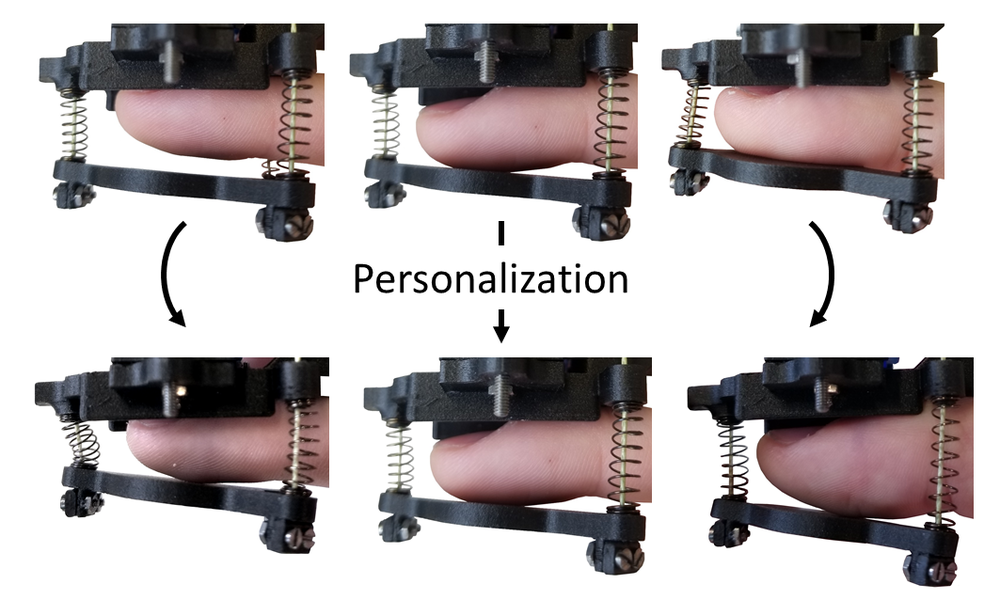Compensating for Fingertip Size to Render Tactile Cues More Accurately

Fingertip haptic feedback offers advantages in many applications, including robotic teleoperation, gaming, and training. However, fingertip size and shape vary significantly across humans, making it difficult to design fingertip interfaces and rendering techniques suitable for everyone. This article starts with an existing data-driven haptic rendering algorithm that ignores fingertip size, and it then develops two software-based approaches to personalize this algorithm for fingertips of different sizes using either additional data or geometry. We evaluate our algorithms in the rendering of pre-recorded tactile sensations onto rubber casts of six different fingertips as well as onto the real fingertips of 13 human participants. Results on the casts show that both approaches significantly improve performance, reducing force error magnitudes by an average of 78% with respect to the standard non-personalized rendering technique. Congruent results were obtained for real fingertips, with subjects rating each of the two personalized rendering techniques significantly better than the standard non-personalized method.
| Author(s): | Eric M. Young and David Gueorguiev and Katherine J. Kuchenbecker and Claudio Pacchierotti |
| Journal: | IEEE Transactions on Haptics |
| Volume: | 13 |
| Number (issue): | 1 |
| Pages: | 144--151 |
| Year: | 2020 |
| Month: | January |
| Project(s): | |
| Bibtex Type: | Article (article) |
| DOI: | 10.1109/TOH.2020.2966993 |
| State: | Published |
| Electronic Archiving: | grant_archive |
| Note: | Katherine J. Kuchenbecker and Claudio Pacchierotti contributed equally to this publication. Presented at the IEEE World Haptics Conference (WHC) |
BibTex
@article{Young20-TH-Compensating,
title = {Compensating for Fingertip Size to Render Tactile Cues More Accurately},
journal = {IEEE Transactions on Haptics},
abstract = {Fingertip haptic feedback offers advantages in many applications, including robotic teleoperation, gaming, and training. However, fingertip size and shape vary significantly across humans, making it difficult to design fingertip interfaces and rendering techniques suitable for everyone. This article starts with an existing data-driven haptic rendering algorithm that ignores fingertip size, and it then develops two software-based approaches to personalize this algorithm for fingertips of different sizes using either additional data or geometry. We evaluate our algorithms in the rendering of pre-recorded tactile sensations onto rubber casts of six different fingertips as well as onto the real fingertips of 13 human participants. Results on the casts show that both approaches significantly improve performance, reducing force error magnitudes by an average of 78% with respect to the standard non-personalized rendering technique. Congruent results were obtained for real fingertips, with subjects rating each of the two personalized rendering techniques significantly better than the standard non-personalized method.},
volume = {13},
number = {1},
pages = {144--151},
month = jan,
year = {2020},
note = {Katherine J. Kuchenbecker and Claudio Pacchierotti contributed equally to this publication. Presented at the IEEE World Haptics Conference (WHC)},
slug = {young20-th-compensating},
author = {Young, Eric M. and Gueorguiev, David and Kuchenbecker, Katherine J. and Pacchierotti, Claudio},
month_numeric = {1}
}


